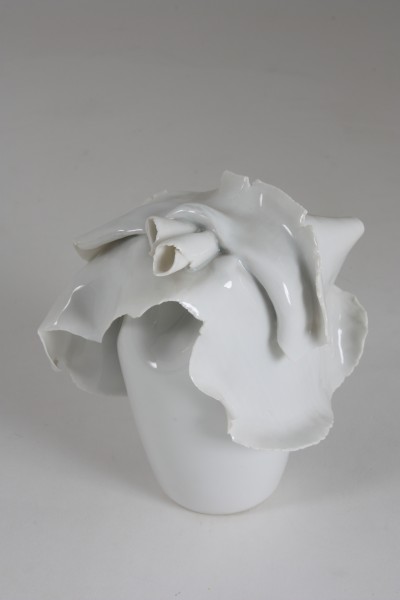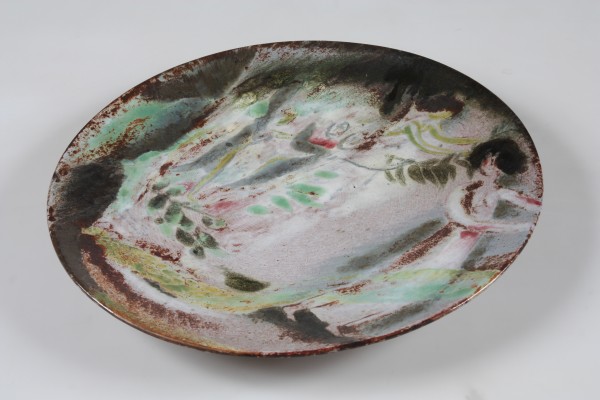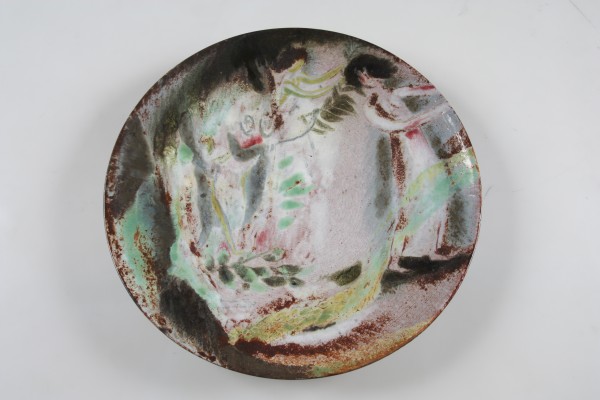The Ceramics Collection was founded with its first purchase in 1961. It monitors and records the development of this type of applied art in Slovakia from the 1960s until the present. The set of works of Júlia Kováčiková-Horová, the key figure in creating the contours of ceramics as a modern discipline in Slovakia, is significant. Several outstanding works of this collection might also be connected with her pedagogical work at the School of Arts and Crafts in Bratislava. Dagmar Rosůlková, Zuzana Zemanová, Eva Trachtová, Teodor Lugs, Eugénia Lugsová and Miloš Balgavý, artists whose works reflect life on the art stage in the 1960s, are represented in this collection by more extensive sets. An attempt to overlap free art depicting figurative tendencies was distinctively applied in their work. The experiment with plate technique is represented in this collection by the works by Ľubomír Jakubčík, while the tendency toward decorative exterior sculpture is represented by the works of Juraj Marth. The vases by Pavol Uhrík reflect the articulated, plastically modelled shape of applied ceramics referring to the traditional shapes of folk ceramics. The set of ceramics by Jozef Sušienka is an equally valuable acquisition. It documents the transition of his work from heavy stoneware garden vases to small interior ikebanas cultivated in colour and shape. Painting by coloured glazes on clay, which was so common in the 1970s, is represented by several works by Ivica Langerová. Imrich Vanek’s work is particularly representative of the 1980s when the author began to distinctively apply the fine art effect of golden glaze and articulate sculpting modelling of shapes and when, for a certain period of time, he switched to a new material – porcelain. Eugénia Lugsová and, by the end of the 1970s, Bernardína Lunterová from the older generation, also used porcelain in their work in fragile shape variations balancing on the edge of applied function and decorative object. The set of works of brothers Ivan and Marián Polonský is relatively extensive. The end of the 1980s belongs to ceramists Gabriela Luptáková and Elena Kárová. The ambition to incorporate spatial vectors led artists in the 1990s to the creation of object and installation; they are represented by the works of Ivica Vidrová and Anna Horváthová. The post-Moderna gesture of everyday items by Vladimír Havrilla, moderate in terms of design, enriched not only the collection, but also the expressive positions of Slovak ceramics. The collection as a whole is oriented on the borderline of applied ceramics and free art. In terms of design, the representation is minimal and features only a few rare prototypes for production. The collection was also enriched by works donated by Gabriela Luptáková, Ivica Langerová, Anna Horváthová and Miloš Balgavý.
Curator of the Ceramics Collection: Viera Kleinová



